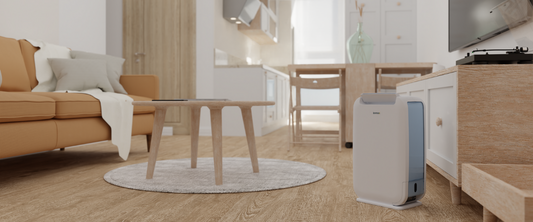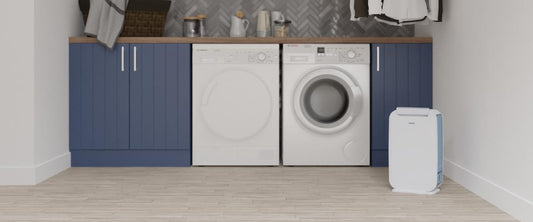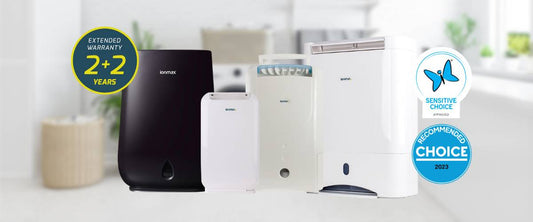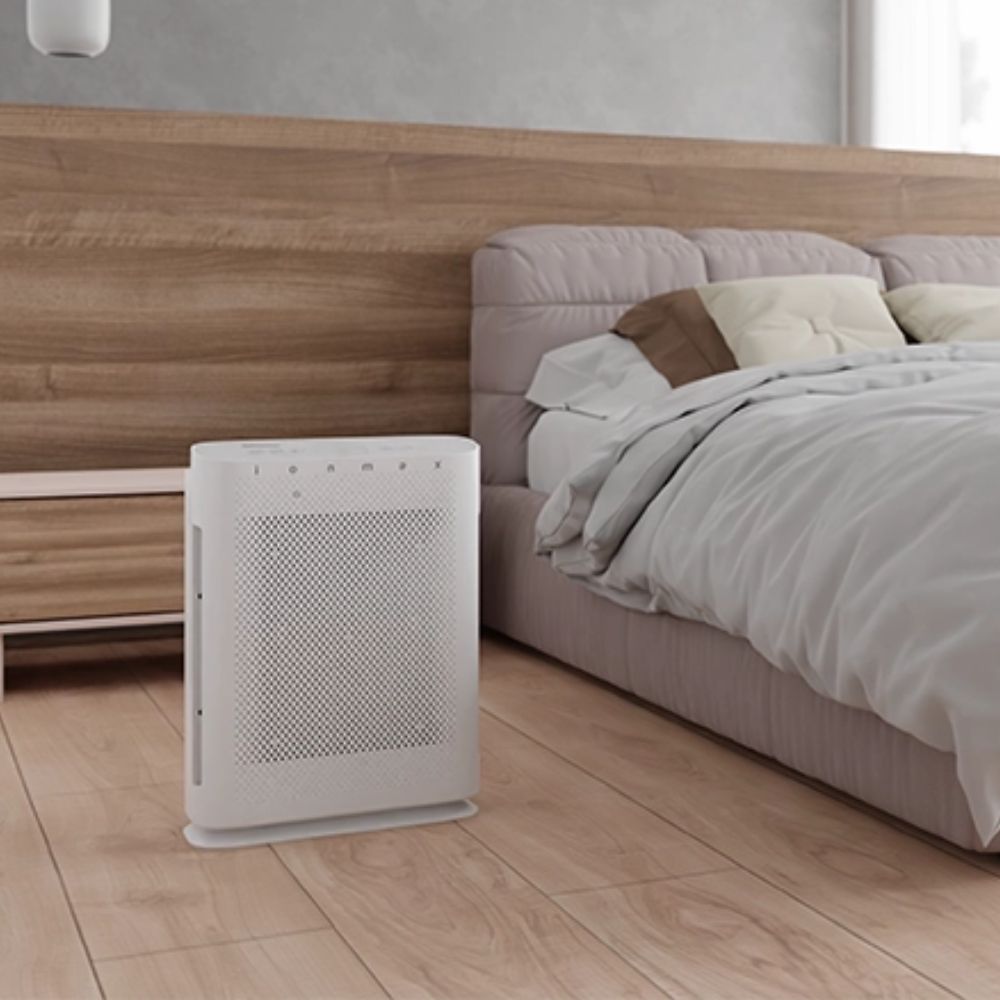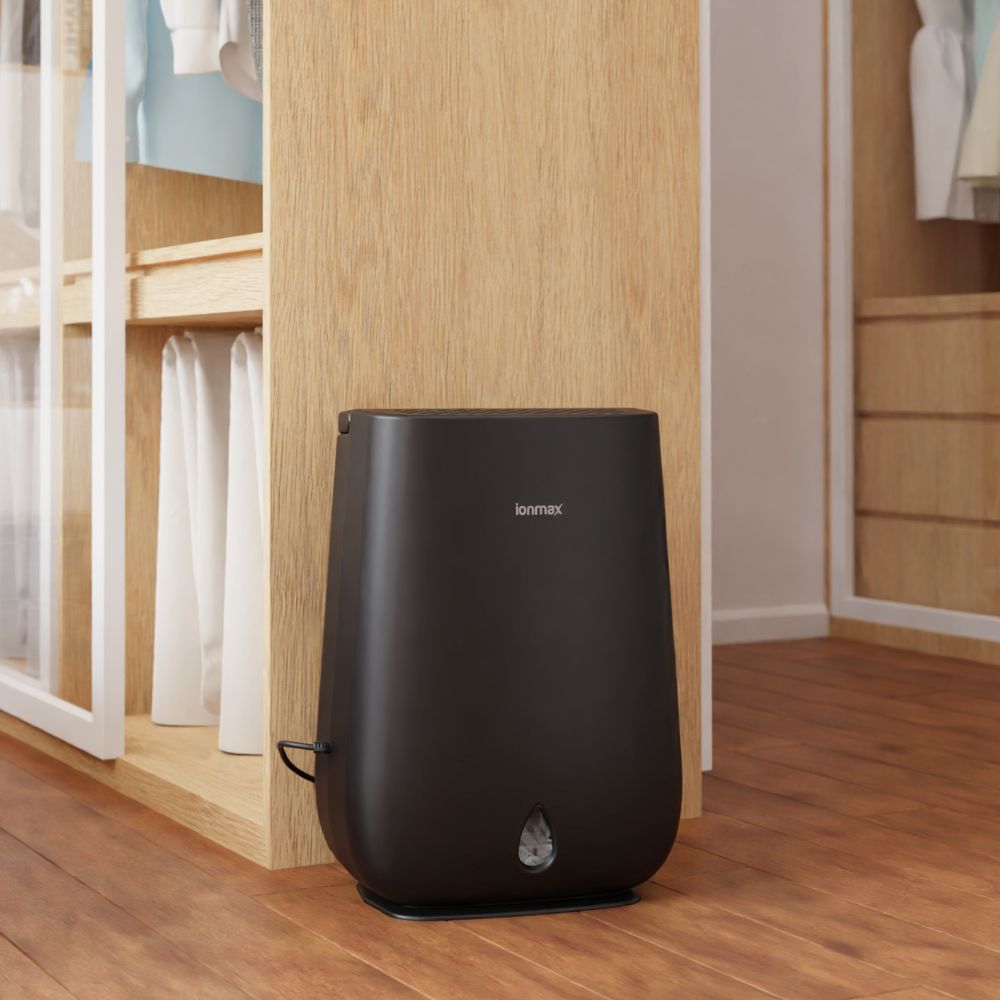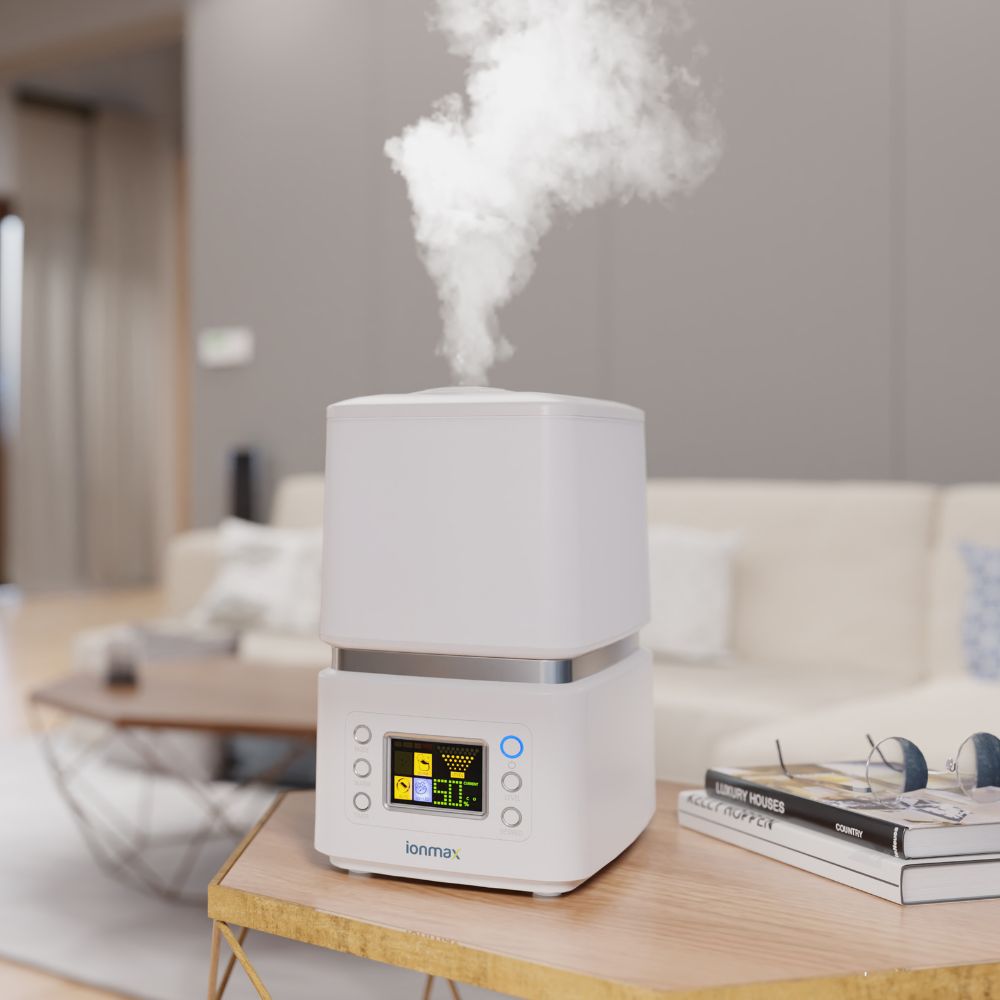All the elements in the world are made up of a balanced number of protons that carry positive charges and electrons that carry negative charges. Negative ions are formed when oxygen molecules gain additional electrons through natural or artificial means. These negative ions are abundant in forests, mountains, waterfalls, beaches and also after heavy rain. While negative ions are known to improve mood, they can also contribute to better indoor air quality.
Clumps airborne pollutants and allergens together for easy removal
When a piece of cloth is rubbed against an inflated balloon, the balloon can be attached to a wall for a few seconds as if it is glued. This happens as the surface of the balloon is negatively charged through friction and it allows the balloon to attach to the wall.
The same idea can be applied to negative ions in the air where the negative ions are attracted to airborne pollutants and allergens, clumping them together to form a greater mass that makes them drop from the air. Dust particles, pollen, and mould spores that are deposited on the floor and furniture surfaces can then be cleaned up easily with a vacuum.
Inhibits the transmission of airborne viruses and bacteria
Even though more research is needed to investigate how negative ions inactivate viruses and bacteria, recent research found that they are indeed able to greatly reduce the aerosol transmission of SARS-CoV-2 and Influenza A viruses. According to the 2022 study conducted in China, the disinfection efficiency of negative ions was more than 99.8% after 1-hour exposure to viruses deposited on surfaces and 87.77% after 10-minute exposure to airborne viruses.
An earlier 2021 Italian study showed that the bacteria S.aureus which causes skin infections and E.coli which causes diarrhea have reduced viabilities of 95% and 70% respectively after 12-hour exposure to negative ions.
While there is no conclusive recommendation on using negative ions to curb the transmission of airborne diseases, research suggested that they help with air purification to a certain degree.
Although negative ions are proven to be effective against airborne pollutants, allergens, and even germs, they do not work against gaseous pollutants such as volatile organic compounds (VOCs) and bigger debris. Using a negative ioniser together with an air purifier equipped with a high efficiency particulate air (HEPA) and activated carbon filter amplifies the efficient removal of airborne pollutants together with unpleasant odours caused by VOCs. Air purifiers with built-in ionisers are also available in the Australian market to improve your indoor air quality by utilising different technologies at once for greater efficiency.
Disclaimer: The information provided in this article is for general reference only. Please seek advice from professionals according to your needs.




